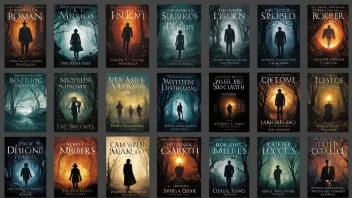In the enchanting world of children's literature, illustrations play a pivotal role that extends far beyond mere decoration. They serve as a bridge between the text and young readers, enhancing understanding and engagement. Research consistently shows that children who interact with illustrated texts often achieve a deeper comprehension of the story, its themes, and characters. Through visual storytelling, illustrations can spark imagination, promote critical thinking, and even support language development. Here are some compelling ways illustrations impact children's comprehension.
Visual Contextualization
Illustrations provide essential context that aids in understanding the narrative. Children often rely on visuals to interpret the story's setting, character traits, and emotional tone. For instance:
- Character Recognition: Images help children identify and remember characters, making it easier to follow their journeys.
- Setting Clarity: Pictures of the story's environment can clarify complex descriptions, allowing kids to visualize the world the author created.
- Emotion Interpretation: Illustrations can convey emotions that words may struggle to express, helping children to empathize with characters.
Engagement and Motivation
Illustrations can significantly enhance the reading experience by making stories more engaging. Young readers are often drawn to colorful and dynamic images, which can motivate them to dive deeper into the text. Consider the following:
- Visual Appeal: Bright and attractive illustrations can captivate a child's attention, making them more eager to read.
- Interactive Elements: Many modern children's books incorporate interactive illustrations, such as flaps or pop-ups, which encourage active participation.
- Story Prediction: Engaging visuals can prompt children to make predictions about the story, enhancing their critical thinking skills.
Supporting Vocabulary Development
Illustrations play a vital role in helping children expand their vocabulary. When combined with text, visuals provide context clues that aid in word recognition and comprehension. Here’s how:
- Context Clues: Pictures can help children decipher unfamiliar words by providing visual associations.
- Reinforcement: Seeing a word alongside an illustration reinforces its meaning and usage.
- Encouraging Discussion: Illustrations often prompt questions and discussions about the story, facilitating language development.
Fostering Imagination and Creativity
Beyond comprehension, illustrations ignite imagination and creativity in young readers. They encourage children to visualize and create their interpretations of the story. Here are some effects:
- Visual Storytelling: Children are inspired to create their own stories based on the illustrations they see, enhancing creativity.
- Art Appreciation: Exposure to various artistic styles through illustrations can foster an appreciation for art.
- World Building: Readers often imagine further scenarios and worlds inspired by the images, enriching their creative thinking.
Facilitating Retention and Recall
Illustrations can significantly aid memory retention and recall. The visual components of a story often make it easier for children to remember key plot points and characters. Consider these aspects:
- Memory Triggers: Images can serve as mental cues, helping children recall specific parts of the story.
- Summarization Skills: Children can visually summarize stories based on illustrations, reinforcing their understanding and retention.
- Building Connections: Illustrations can help children connect narrative elements, making it easier to remember the story as a whole.
In conclusion, illustrations are not just decorative elements in children's books; they are vital tools that facilitate comprehension, engagement, and creativity. By providing visual context, enhancing vocabulary, fostering imagination, and aiding memory retention, illustrations play an indispensable role in a child's reading journey. As parents, educators, and librarians, recognizing the significance of illustrations can empower us to choose books that enrich children's understanding and love of literature.






